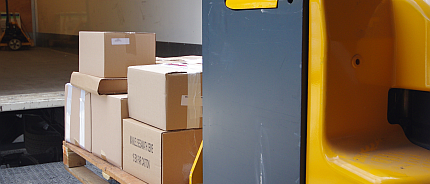Conveying aids
Continuous material handling systems and intermittent material handling systems are used to perform logistical tasks such as transshipment or order picking. A drive generates kinetic energy for the transport equipment. The types of drive for transport equipment can be categorized as follows:
Overview of drive types
- Manual drive
- Gravity drive
- Motorized drive
Manual drive
Manual drive is generally only used for discontinuous conveyors. Discontinuous conveyors are, for example, forklifts or cranes. The operator manually drives the means of transport for driving and lifting movements. Manual drive of a means of transport is most suitable for short distances with low loads and low inclines.
Gravity drive
Gravity drive is generally only used in continuous material handling systems such as roller conveyors and chutes and in flow racks such as channel rack storage systems. Gravity drive is a relatively inexpensive form of energy and is suitable for low inclines. When transporting units via roller conveyors, for example, care should be taken to ensure that the inclination is not greater than 3-5% when a gravity drive is in operation. Otherwise, special braking systems are required.
Motorized drive
The motorized drive is suitable, for example, when the units are to be transported at a constant speed. It can be divided into the following areas:
- Combustion engine drive
- Electric motor drive
- Hybrid drive
For more information about motorized drives, see internal combustion engine.
Image source: © Minicel73 – Fotolia.com
